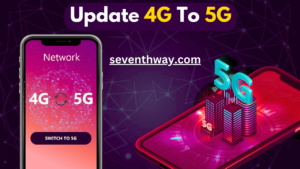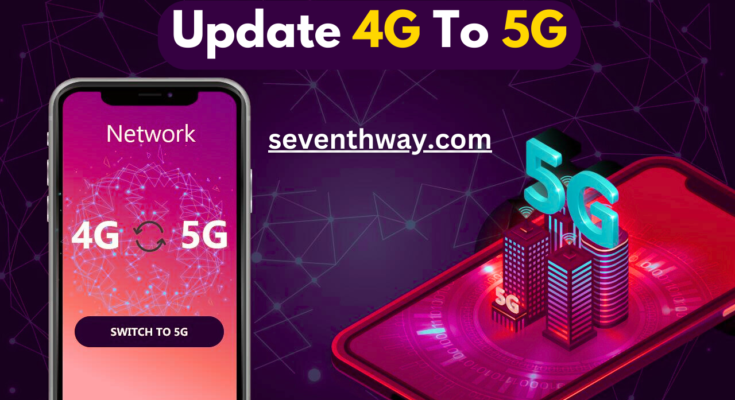4G To 5G Converter- Upgrade Your Device 4G To 5G- Many consumers are eager to upgrade their 4G devices in order to take advantage of the speed and efficiency of the 5G network as 5G technology spreads around the world. This shift is about more than just faster internet; it’s about opening the door for more creative applications and services.
Upgrade 4G To 5G
Switching from 4G to 5G is more complicated than just flipping a switch. The steps and things to think about that you should do to make the transfer go well are covered in this article.
Knowing the Distinction Between 4G and 5G
It’s important to know what differentiates 4G from 5G before beginning the conversion process. Compared to 4G, the fifth generation of mobile networks (5G) offers much faster data speeds, lower latency, and more capacity. This translates to better streaming, quicker download speeds, and more stable connections—especially in densely populated areas.
Faster data transmissions are made possible by 5G’s capability for a wider range of frequencies, including the high-frequency millimeter-wave band. These high frequencies, however, need a more extensive network of antennas and base stations because of their shorter ranges and increased sensitivity to impediments.
Verify Compatibility of Devices
Making sure your smartphone is suitable for 5G is the first step towards switching to 5G. Not every smartphone—especially the older models designed for 4G networks—is compatible with 5G. To find out whether your phone is 5G compatible, you can:
Check out the website of the manufacturer: Visit the manufacturer’s website to find the model of your phone. Network compatibility is often included in the specifications section.
Verify Phone Settings: On some phones, the settings menu has a list of network capabilities. To find out whether 5G is available, search for “Mobile Network” after selecting “Network & Internet.”
Speak with Your Carrier: To find out whether your smartphone is compatible with 5G, get in touch with your cell carrier if you’re not sure.
You will need to get a new smartphone that supports 5G if your current one is incompatible with the technology.
Make SIM card updates
Make sure your SIM card is 5G compatible once you have a smartphone that can use 5G. You may need to get a new SIM card since certain older ones might not function with 5G networks. This is how to go on:
Verify with Your Carrier: Find out whether your present SIM card is 5G compatible by getting in touch with your cell operator. With your SIM card number, the majority of providers can confirm this.

Request a New SIM Card: Contact your carrier to get a new SIM card if the one you currently have does not support 5G. Usually, this is a straightforward procedure that just going to a shop or having one mailed to you.
Install the SIM Card: Insert your new SIM card into your smartphone by following the instructions provided by your carrier as soon as you get it.
Choose the Appropriate Strategy
It takes more than just a 5G device and SIM card to use 5G; you also need a mobile contract that supports 5G. This is how you should proceed:
Examine Your Current Plan: Find out whether 5G connection is included in your current plan. While some carriers could need you to switch plans, others might automatically update their plans to include 5G.
Upgrade If Needed: Get in touch with your carrier to upgrade if your plan excludes 5G. Be sure to ask about data caps, speeds, and coverage areas, since they may vary depending on the bundle.
Consider Your Usage: You may want to consider buying an unlimited or high-data-cap plan if you use a lot of data or depend on your mobile connection for work.
Verify Your 5G Network
Once your phone is configured, you should check to see whether your 5G connection is operational:
Examine the Network indication: If your phone is connected to a 5G network, the status bar should display a “5G” or similar indication.
Do a Speed Test: To check the speed of your connection, use programs like Ookla’s Speedtest. You might use this to confirm if you’re getting 5G speeds.
Try Different Places: Depending on your area, 5G coverage varies significantly. To gauge the network’s performance, try your connection at several places.
In summary
If you follow the right steps, upgrading from 4G to 5G may lead to increased internet speeds, less latency, and a more reliable connection. By verifying that your phone, SIM card, and cell plan are all 5G-compatible and correctly configuring your settings, you can seamlessly transition to the next mobile technology. You will be able to take full advantage of 5G technology if you are prepared.
